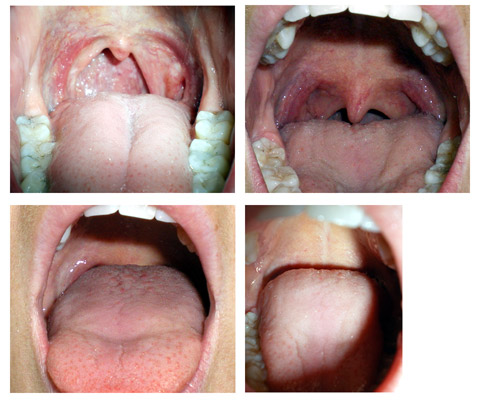For the Mallampati test, ask the patient to open their mouth as wide as possible, and stick their tongue out without phonating. The observer should be opposite the patient’s face.
Four classes are described, as shown in Fig 1.
In reality, as Class 3 and 4 views are associated with an increased risk of difficult laryngoscopy, it is only important to distinguish between a visible posterior pharyngeal wall (Class 1 and 2) and one that cannot be seen (Class 3 and 4).
The test is prone to inter-observer variation.
Used alone, it correctly predicts about 50 % of difficult laryngoscopies. It has a false positive rate of up to 90 % and positive predictive value of 3-5 %.

Mallampati Test (Modified) Classifications
|
Class 1 |
Faucial pillars (palatoglossal and palatopharyngeal folds), soft palate and uvula visible |
|
Class 2 |
Faucial pillars and soft palate visible Uvula masked by base of tongue |
|
Class 3 |
Only soft palate visible |
|
Class 4 |
Soft palate not visible |
Table 1 Description of Mallampati classifications